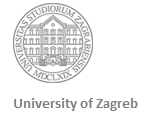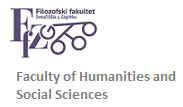Home » 9. semestar – NASTAVNIČKI SMJER – dvopredmetni
Category Archives: 9. semestar – NASTAVNIČKI SMJER – dvopredmetni
Language and cognition: from theory to application
Instructor: Associate professor Renata Geld, PhD Course title: Language and cognition: from theory to application Language: English Number of hours per semester: 30 hours ECTS: 4 credits Level: graduate (open to all graduate students of English) Course content: Students attending this course will be encouraged to discover and re-discover the nature of language and its […]
Language and cognition: from theory to application (arch.)
Instructor: Assistant professor Renata Geld, PhD Course title: Language and cognition: from theory to application Language: English Number of hours per semester: 30 hours ECTS: 4 credits Level: graduate (graduate course open to all graduate students of English) Course content: Students attending this course will be encouraged to discover and re-discover the nature of language […]
Bilingualism
GRADUATE PROGRAMME – Master of Education in English Language and Literature SINGLE AND DOUBLE MAJOR PROGRAMMES semester 3 Course title: BILINGUALISM Course coordinator: Assistant Professor Stela Letica Krevelj Lecturer: Assistant Professor Stela Letica Krevelj ECTS credits: 5 Language of instruction: English Duration: semester III Status: elective Form of instruction: 2 hours of lectures + 2 […]
Learners with special needs: blindness and SLA
Course title: Learners with special needs: blindness and SLA Instructor: Asst. Prof. Renata Geld ECTS credits: 3 Semester: IX Status: elective Enrollment requirements: none Course description and objectives: The course offers basic aspects of interrelation between language, general cognitive processes and experience in relation to issues pertaining to language learning by the blind and visually […]
Learners with special needs: blindness and SLA-archive
Course title: Learners with special needs: blindness and SLA Instructor: Asst. Prof. Renata Geld ECTS credits: 3 Semester: IX Status: elective Enrollment requirements: none Course description and objectives: The course offers basic aspects of interrelation between language, general cognitive processes and experience in relation to issues pertaining to language learning by the blind and visually […]
Practicum 1 (3rd sem)
Course title: PRACTICUM 1 Instructors: izv. prof. dr. sc. Renata Geld, dr. sc. Bojan Prosenjak, v. asist., Nives Kovačić, asist. ECTS credits: 2 Status: mandatory Semester: III Enrollment requirements: none Course description: Classroom observation. Elements of the lesson plan for an EFL class. Designing teaching activities.Post-teaching reflection. Self-assessment of teaching. Reacting to feedback. Cooperation with […]
Individual Differences in Language Acquisition
Course title: INDIVIDUAL DIFFERENCES IN LANGUAGE ACQUISITIONInstructors: Professor Jelena Mihaljević Djigunović, PhD.ECTS credits: 3Status: electiveSemester: IXEnrollment requirements: noneCourse description: Attitudes; motivation; language anxiety; learning styles; learning strategies; willingness to communicate; communication strategies; language learning aptitude; age; research into individual differences; dealing with individual differences.Objectives: Enable students to understand the concept of individual learner differences and […]



